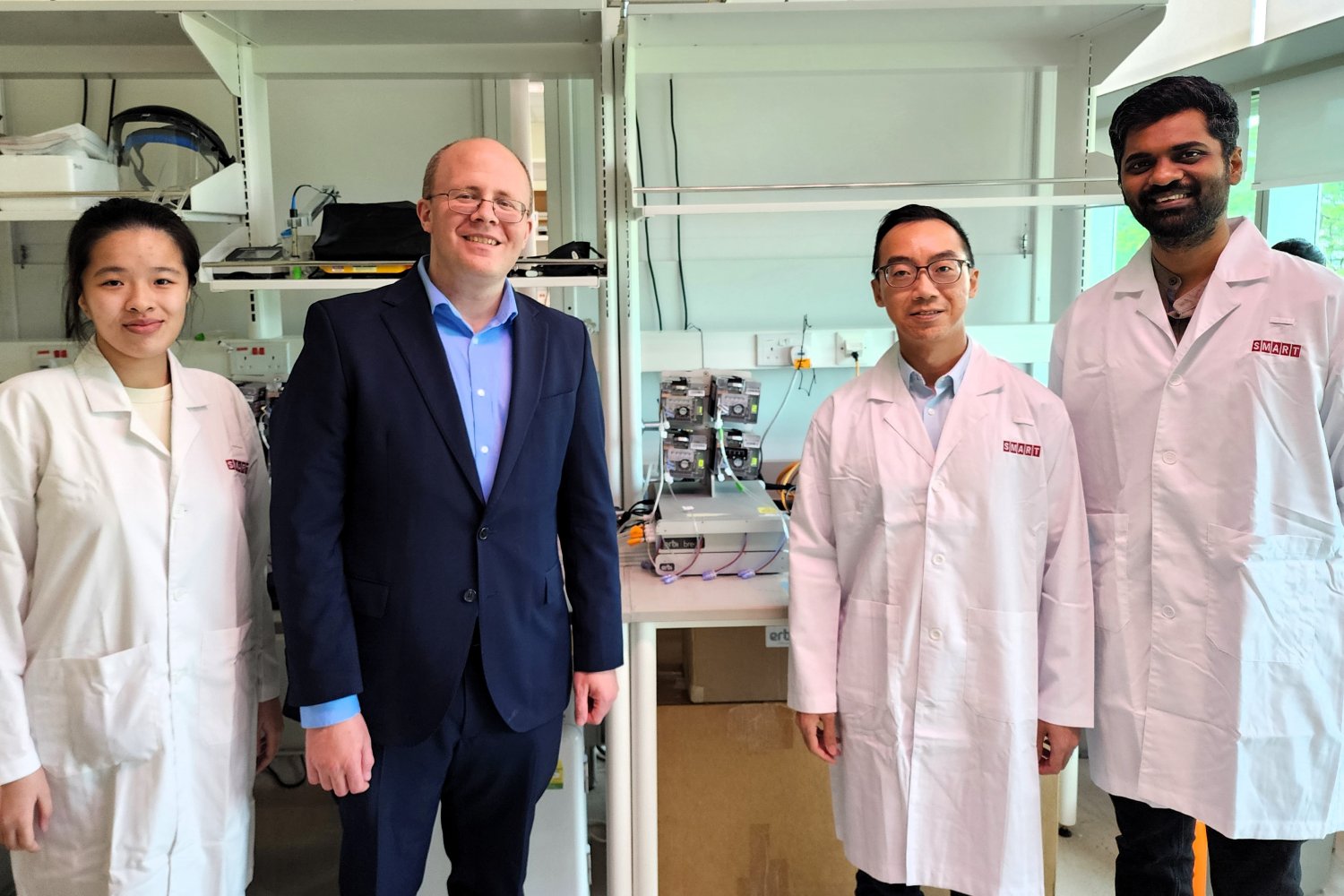MIT Learn offers “a whole new front door to the Institute” – MIT News

Report on the Launch of MIT Learn and its Contribution to the Sustainable Development Goals
Introduction: A New Platform for Global Education and Sustainable Development
The Massachusetts Institute of Technology (MIT) has launched MIT Learn, a dynamic, AI-enabled digital platform consolidating its non-degree learning opportunities. This initiative significantly advances the United Nations Sustainable Development Goals (SDGs), particularly SDG 4 (Quality Education), by providing free and accessible educational resources to a global audience. Building on its 2001 commitment to open learning, MIT Learn represents a major step in leveraging technology to reduce educational inequalities (SDG 10) and foster lifelong learning for all.
Advancing SDG 4: Quality Education
Enhancing Inclusive and Equitable Access to Lifelong Learning
MIT Learn is designed to democratize access to high-quality educational content, directly supporting the core tenets of SDG 4. The platform serves as a single point of entry to the Institute’s vast digital learning ecosystem.
- Comprehensive Repository: The platform aggregates over 12,700 educational resources, including courses, videos, and podcasts from across the Institute.
- Global Reach: It makes MIT’s knowledge accessible to anyone with an internet connection, breaking down geographical and financial barriers to higher education.
- Lifelong Learning Pathways: MIT Learn caters to a diverse audience, from middle and high school students seeking supplemental materials to professionals pursuing upskilling and reskilling, thereby promoting the principles of lifelong learning central to SDG 4.
Leveraging Innovation for Sustainable Development (SDG 9)
AI-Powered Infrastructure for Personalized Learning
The platform’s use of artificial intelligence exemplifies the application of innovation and technology (SDG 9) to achieve sustainable development objectives. This technology enhances the user experience and improves learning outcomes.
- Personalized Discovery: An AI-powered recommendation feature, “Ask Tim,” helps learners find resources aligned with their personal and professional goals, moving beyond traditional search methods.
- Enhanced Engagement: In select courses, an AI assistant provides instant summaries, creates flashcards, and answers questions about lecture content.
- Guided Problem-Solving: An AI tutor is being piloted to support learners through problem sets, guiding them toward solutions without providing direct answers, fostering deeper understanding.
Contribution to Broader Socio-Economic Goals
Fostering Decent Work and Reducing Inequalities (SDG 8 & SDG 10)
By providing accessible tools for skill development, MIT Learn directly contributes to economic empowerment and the reduction of global inequalities.
- Economic Empowerment: The platform offers clear pathways for professionals to upskill or reskill, enhancing their qualifications for employment and contributing to sustainable economic growth (SDG 8).
- Reducing Disparities: By making premier educational resources available for free, MIT Learn helps to level the playing field, providing opportunities to individuals regardless of their socio-economic background, a key target of SDG 10.
A Collaborative Model for Future Growth (SDG 17)
Institutional Partnerships and Future Outlook
The development of MIT Learn was a collaborative effort involving MIT Open Learning, Sloan Executive Education, Professional Education, and numerous faculty committees. This internal partnership (SDG 17) serves as a model for achieving ambitious educational goals.
Looking ahead, the platform plans to integrate content from the MIT Press and expand collaborations across the Institute. This continued growth reinforces MIT’s commitment to its global mission, using innovative digital tools to disseminate knowledge and create life-changing opportunities in alignment with the Sustainable Development Goals.
Analysis of SDGs, Targets, and Indicators in the Article
1. Which SDGs are addressed or connected to the issues highlighted in the article?
-
SDG 4: Quality Education
The core theme of the article is MIT’s initiative to provide free, accessible, and high-quality educational resources to a global audience through its new platform, MIT Learn. This directly aligns with the goal of ensuring inclusive and equitable quality education and promoting lifelong learning opportunities for all. The article states, “With MIT Learn, we’re opening access to MIT’s digital learning opportunities for millions around the world,” and its mission is to “disseminate knowledge globally.”
-
SDG 9: Industry, Innovation, and Infrastructure
The article highlights the use of advanced technology to create the MIT Learn platform. It is described as a “dynamic AI-enabled website” that uses “AI-powered features that leverage emerging technologies.” This focus on technological innovation as a means to enhance access to information and services connects directly to SDG 9, which encourages building resilient infrastructure, promoting inclusive and sustainable industrialization, and fostering innovation.
-
SDG 17: Partnerships for the Goals
The development of MIT Learn is presented as a collaborative effort. The article mentions that the project was spearheaded by MIT Open Learning “in cooperation with Sloan Executive Education and Professional Education” and involved insights from various faculty advisory committees. This multi-stakeholder partnership within a single major institution to mobilize and share knowledge and technology on a global scale reflects the principles of SDG 17.
2. What specific targets under those SDGs can be identified based on the article’s content?
-
Target 4.3: Ensure equal access for all women and men to affordable and quality technical, vocational and tertiary education, including university.
The article explains that MIT Learn provides “educational resources for free to anyone in the world,” removing the financial barrier to access. It offers resources for a wide range of learners, including “upskilling opportunities for early-career professionals, reskilling programs for those considering a career shift,” which falls under technical and vocational education, and access to university-level courseware, aligning with tertiary education.
-
Target 4.4: Substantially increase the number of youth and adults who have relevant skills, including technical and vocational skills, for employment, decent jobs and entrepreneurship.
The platform is designed to help learners find resources aligned with their “personal and professional goals.” It explicitly provides “upskilling opportunities” and “reskilling programs,” which are directly aimed at equipping adults with relevant skills for employment and career changes.
-
Target 9.c: Significantly increase access to information and communications technology and strive to provide universal and affordable access to the Internet in least developed countries.
While not about providing internet access itself, the article describes a significant technological initiative to increase access to information. The creation of an “AI-enabled website” that “seamlessly connect[s] the existing Institute’s learning platforms in one place” is a direct application of information and communications technology (ICT) to make knowledge universally accessible.
-
Target 17.6: Enhance North-South, South-South and triangular regional and international cooperation on and access to science, technology and innovation and enhance knowledge sharing on mutually agreed terms.
MIT, an institution in the global “North,” is using its technological and educational resources to “disseminate knowledge globally” and provide “educational resources for free to anyone in the world.” This is a clear example of enhancing access to knowledge, science, and technology on a global scale.
3. Are there any indicators mentioned or implied in the article that can be used to measure progress towards the identified targets?
-
Indicator for Target 4.3 & 4.4: Number of available educational resources and courses.
The article explicitly states that MIT Learn enables access to “more than 12,700 educational resources — including introductory and advanced courses, courseware, videos, podcasts, and more.” This number serves as a direct indicator of the volume of educational opportunities being made available.
-
Indicator for Target 4.3: Global reach and number of users.
The platform aims to open access for “millions around the world” and “global learners.” The number of registered users and their geographic distribution would be a key indicator of progress in providing equal access to tertiary education resources globally.
-
Indicator for Target 9.c: Deployment of advanced technology for access.
The article details the use of specific technologies as a means to improve access. The implementation of an “AI-powered recommendation feature called ‘Ask Tim’,” an “AI assistant,” and an “AI tutor” are concrete indicators of leveraging innovation to enhance access to information.
-
Indicator for Target 17.6: Number of multi-stakeholder partnerships.
The article mentions the project was developed “in cooperation with Sloan Executive Education and Professional Education” and with input from the “OpenCourseWare Faculty Advisory Committee,” “MITx Faculty Advisory Committee,” and others. The number and nature of these internal and future external collaborations serve as an indicator of partnership-based knowledge sharing.
4. Summary Table of SDGs, Targets, and Indicators
| SDGs | Targets | Indicators |
|---|---|---|
| SDG 4: Quality Education |
4.3: Ensure equal access for all to affordable and quality technical, vocational and tertiary education.
4.4: Substantially increase the number of youth and adults who have relevant skills for employment. |
– Number of available educational resources (stated as “more than 12,700”). – Number of global users (implied by “millions around the world”). – Number of courses offered for upskilling and reskilling. |
| SDG 9: Industry, Innovation, and Infrastructure | 9.c: Significantly increase access to information and communications technology. |
– Development and deployment of an AI-enabled platform. – Implementation of specific AI tools like “Ask Tim,” AI assistants, and AI tutors to facilitate access to information. |
| SDG 17: Partnerships for the Goals | 17.6: Enhance international cooperation on and access to science, technology and innovation and enhance knowledge sharing. |
– The platform itself as a mechanism for global knowledge sharing. – Number of internal multi-stakeholder collaborations mentioned (e.g., MIT Open Learning, Sloan Executive Education, various faculty committees). |
Source: news.mit.edu

What is Your Reaction?
 Like
0
Like
0
 Dislike
0
Dislike
0
 Love
0
Love
0
 Funny
0
Funny
0
 Angry
0
Angry
0
 Sad
0
Sad
0
 Wow
0
Wow
0







































































